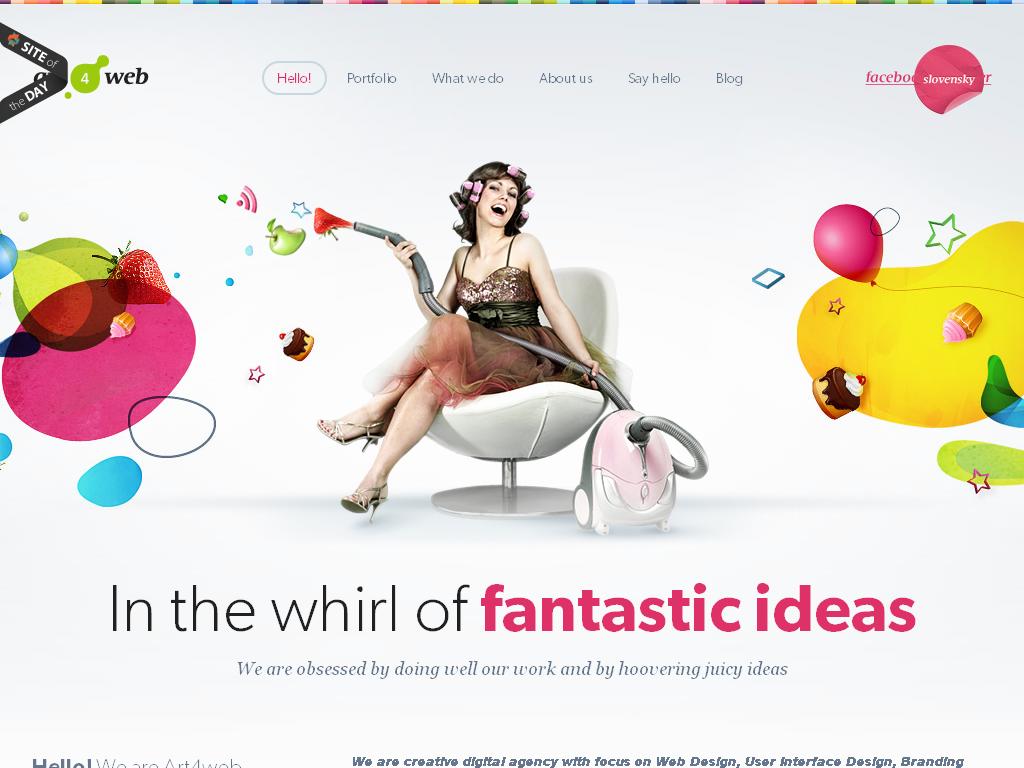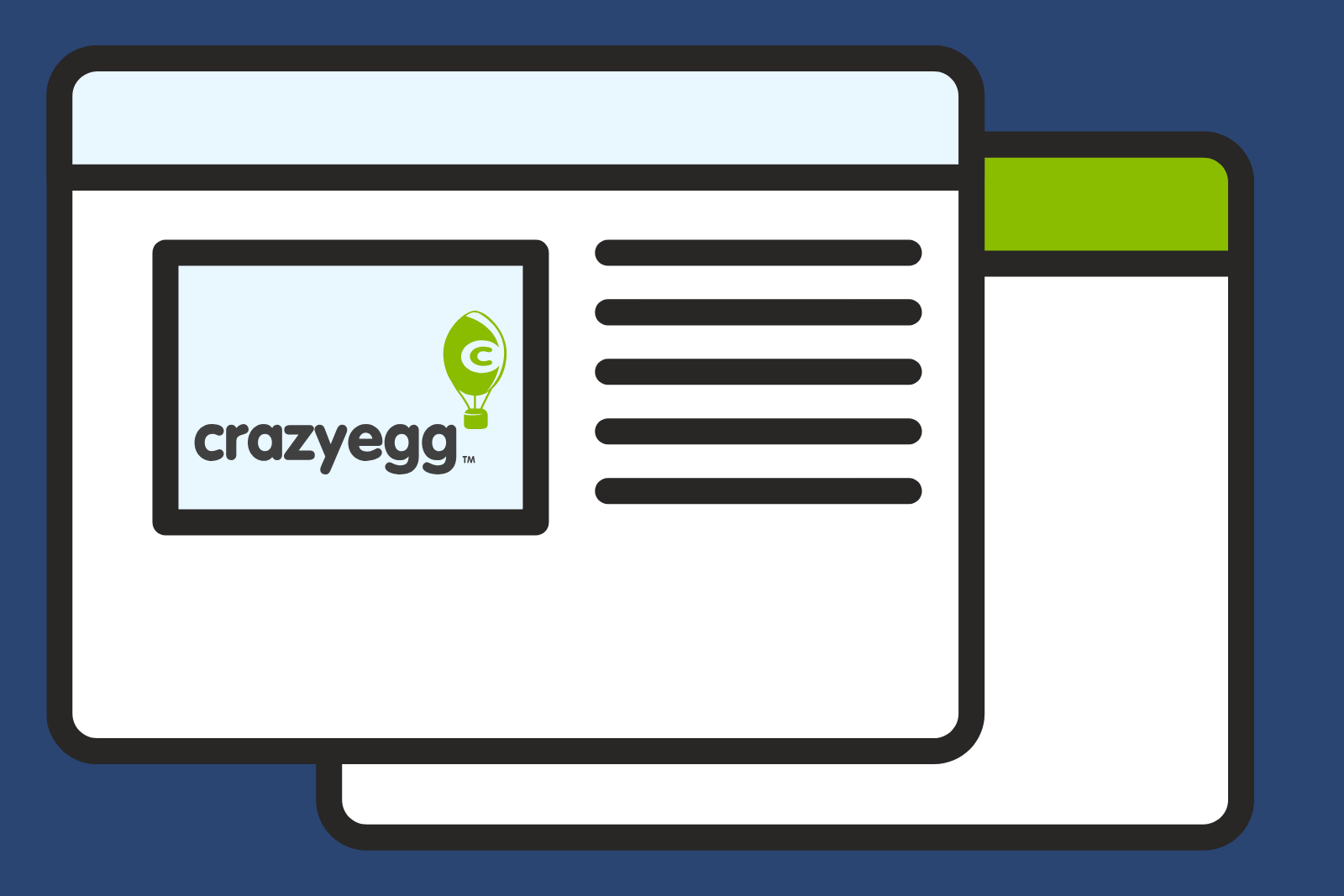Your website gets a lot of traffic. But that traffic doesn’t stick around. Sound familiar?
Every day internet users visit millions of web pages but don’t spend more than a few seconds on the majority of them. They land on a page, skim it briefly and move on.
The ‘Bounce Rate’ is a measure of the users that land on a page of your website but ditch it right away and don’t bother visiting any other pages. You can track the bounce rate for any of your pages using services like Google Analytics.
Your bounce rates are like a golf score. The lower the better.
Here are 12 ways to reduce your bounce rate and encourage visitors to view more content on your website.
1. Deliver Content in a Flow
Expecting a visitor to take the time to navigate your website and explore all the great gems you’ve posted recently is naïve to say the least.
If you want to extend the time visitors spend on your website, you need to present your content to them in a continuous flow: The end of one gallery should be the beginning of another, slideshows should be set to automatic play and there should be an overlap between the different sections on your website.
Notice how search results on Google Images expand as you scroll down instead of waiting for you to click to another page? That’s one simple but effective example of delivering content in an uninterrupted flow.
The entertainment industry is one of the early players to exploit the benefits of content-in-flow.
For instance, Frog Design designed the official website for Vogue Italia in a way that delivers content in a continuous flow instead of through a static navigation hierarchy. Similarly, celebrity gossip websites like Us Weekly have all their galleries linked together so that the user is automatically transferred to the next gallery when the first slideshow ends.
The underlying logic is that if the visitor landed on a gallery for red carpet fashion at the Globes, they wouldn’t mind being escorted to a gallery of the stars at the Oscars. By leading your visitors through related content in a similar manner, you can effectively reduce the bounce rate.
Also, as you can see on the Vogue Italia site, continuous content is coupled with multi-type content for maximum effect. Image galleries, latest video clips, live twitter updates, excerpts from latest blog posts and embedded soundcloud clips are organized on a single page (usually the home page) to maximize the engagement the visitor can potentially have with the website.
2. Identify the Bouncers
Services like Google Analytics give you an in-depth analysis of your websites visitors and you can use the information to reduce your bounce rate.
For instance, your analytics might tell you that the majority of bouncers are using Firefox. And, running your webpage in Firefox, you might discover that the browser wasn’t rendering your page completely or correctly.
In such cases, the bounce rate is high because of technical issues- and not because of low quality content.
Also, your bounce rate could seem artificially high if you are somehow attracting a lot of visitors that aren’t your target customers. By promoting your website in channels and communities that cater specifically to your customer base, you can eliminate the amount of ‘random’ visitors who only discover they are in the wrong place once they have landed on your page. By properly profiling, segmenting and targeting your customers, your website will generate a higher percentage of hits from your desired audience.
There are also tools like Crazy Egg that go further than Google Analytics. With Crazy Egg you can pinpoint the exact areas on your webpage that convert well and the ones that don’t. By getting highly focused information about your page, you can work on improving every aspect of it.
Also, do some research to find out the bounce rates for specific keywords. If your webpage is optimized highly for a keyword with a higher bounce rate, your conversion rate will suffer accordingly. Choose keywords that are directly pertinent to your content but have lower bounce rates – and abandon keywords with high bounce rates.
3. Place Your Ads Wisely
Whether it’s a bunch of popups, a garish video ad that starts playing immediately or text ads placed too close to the navigation bar, the quantity and placement of ads on your web page can turn off visitors instantly. Use a select few ads and place them sufficiently far away from your content.
Smashing Magazine manages to get away with using almost half of their display with ad space just because the ads are relevant and good looking- and they don’t interrupt the actual content.
4. Reduce load times
Nobody likes to wait.
And nobody is as impatient as the average internet surfer who wants information to be at their fingertips immediately and without delay. The longer your page takes to load, the more you are testing your visitors’ patience. And with competitor websites and similar information so easily available, your visitor has no reason to wait for your site to finish loading when they could get quicker service elsewhere.
Reduce your website’s load time by optimizing your images and code for the web, and getting rid of any unnecessary heavy scripts, widgets and plugins.
Also, it’s better if your ‘loading’ message comes with a timer or some other indication of progress. Visitors are more likely to stick around if they know exactly how long they need to wait than if they are faced with a pre-loader with an indefinite end.
5. Make it accessible and legible
Your website’s navigation and structure should be designed in a way that makes it super easy for visitors to access the information they are looking for. Complicated multi-level hierarchical structures and ambiguous wording can turn off visitors and make them switch to another website.
Also make sure that all the text on your website is legible. Don’t make the text so small in size that it’s a headache to read it or so big that it’s childish and unprofessional. Use a sharp contrast between the background and font colors to improve readability.
The Groupon landing page uses a stunningly simple but highly effective interface that makes the whole process easier and accessible for their users.
6. Get to the point
- Be specific and concise- and avoid vague wordiness.
- Avoid interruptions and distractions. Don’t have a video ad (with a strangely unresponsive ‘close’ button) floating over your content.
- Fulfill your promises. Don’t try to lure in your visitors with pandering copy if you can’t deliver on what you’re promising.
The Square Up landing page is straight to the point and illustrates their product effectively.
7. Design for multiple screen devices
Similar to the browser issue, your high bounce rate could be because of another technical problem: an unresponsive webpage.
An example of an unresponsive webpage is one that shows up great on a 1024 X 768 display on a desktop computer but goes completely haywire on a mobile device. If your webpage analytics show that a good chunk of bouncers were viewing your webpage on a mobile device or a different operating system, you should test your website across a range of platforms and devices to ensure it is universally responsive, robust and adaptive. There are a bunch of great responsive WordPress themes you can choose from and, thanks to CSS 3, designing with flexibility is a lot easier these days.
Here are a just a few examples of responsive web design but you can see a lot more at DesignModo.
8. Interlink, Recommend and Relate
If your website is built around posts (whether the theme is tech info or Hollywood gossip), you can extend the time users spend on your website by designing elements that point to related content.
So if a visitor has landed on a page that contains an article on removing a specific virus from their system, there should be links to posts about the best antiviruses in a ‘related posts’ section. You could also include hyperlinks within the post explaining terms and methods referenced in the current post and a recommendation for suggested reading.
This way, any single post a visitor lands on can act as a portal to other pages on the website.
9. Provide previews and excerpts
By providing excerpts from your articles on the home page or giving previews of premium content (whether it’s a whole e-book, a video tutorial series or a software tool), you could increase your visitors’ interest in what you are offering. An e-book could be promoted with a chapter excerpt, a video tutorial could be previewed with a sample clip and an app could be introduced with a demo or trial version.
Your homepage should also contain excerpts of any articles that you feature on it. The Theme Magazine website does a good job of encouraging visitors to click further by featuring interesting excerpts and opening lines from its articles.

10. Use engaging colors and headings
Here’s a simple web design tip that can actually make a significant difference.
Your webpage might have a high bounce rate just because it’s dull and monotonous. By spicing it up with colorful images and dividing the content using helpful and prominent headings, you could make your content a lot more engaging.
11. Include multimedia
We are rapidly becoming a society that is forgetting the joys of reading.
The cultural implications aside, this is also an unfortunate development for the web. Now, more than ever, text is the most repelling manner of communication. We want to see visuals, hear music and play games but what we don’t want to do is read. To solve this problem in a design context, almost all content can be made more pleasing if it’s accompanied by an interesting video clip or relevant images. Because visuals can quickly generate curiosity and interest, they encourage your visitors to read what you have to say and find out more.
The folks at Dropbox keep the text to a bare minimum by just prominently featuring an effective video clip that does all the talking.
12. Let Visitors Engage
A great way to promote your site and spread the word is letting your visitors interact with it using social media. By allowing visitors to tweet about your articles, see what their friends have also ‘liked’ and check out what people are saying about your website/content, you can make your whole page a lot more engaging and alive. Social media encourages participation on the users’ end which is effective in keeping them on the page longer.
Rottentomatoes.com is a great example of a website that makes its content more social by letting visitors check out what movies their friends have been watching and post their own watch lists to their Facebook timeline.
Well designed websites with high quality content find their own audience and keep them coming back for more. As a web designer, the design choices you make can have a significant effect on the bounce rate.





























